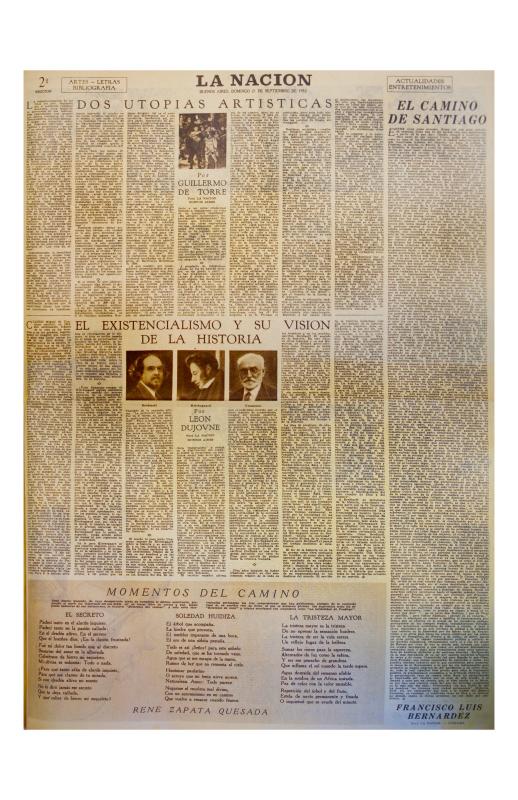The magazine Perceptismo. Teórico y Polémico [Perceptivism: Theoretical and Polemical] was the official publication of the Perceptivist group. Raúl Lozza, Rembrandt van Dyck Lozza (1915–96) and Haber wrote in its seven issues—which circulated in Buenos Aires between October 1950 and July 1953. The last issue incorporated the subtitle “Homenaje al esfuerzo por la paz” [Tribute to the peace effort], and the group decided to remove it from sale due to the risk of it being confiscated due to the prevailing censorship in those years. Perceptivism is the name given to the approach created by the Argentinean artist Raúl Lozza (1911–2008), after the dissolution of the Asociación de Arte Concreto — Invención [Concrete Art and Invention Association]. The Perceptivist approach is based on three principles: the substitution of traditional background with the notion of field (architectural wall), the creation of cualimetría [quality measurements] as the flat shape, and the centrifugal structure of references in space, which seeks to do away with the impact of the periphery.
Abraham Haber (1924–86) was a philosopher, student of Jung’s work, wrote Un símbolo vivo [A Living Symbol], besides working in art criticism and being the theoretician of the Perceptivist group.Guillermo de Torre (1900–71) was an essayist, poet, and critic of literature and Spanish art belonging to the Generation of 27. In Buenos Aires, he was a professor of literature in theUniversidad de Buenos Aires; besides devoting himself to literary and artistic criticism, he was also a founding member, as literary consultant, to the Losada editorial group. This source has been selected because it illustrates Haber’s opinions on Guillermo de Torre’s statements, printed in the newspaper La Nación [The Nation]—which can be consulted in the documentsno.757470 and 743556—and, at the same time, he inserts himself into the debates about “denominations,” stemming from the emergence of abstract art in the Argentinean art scene.


